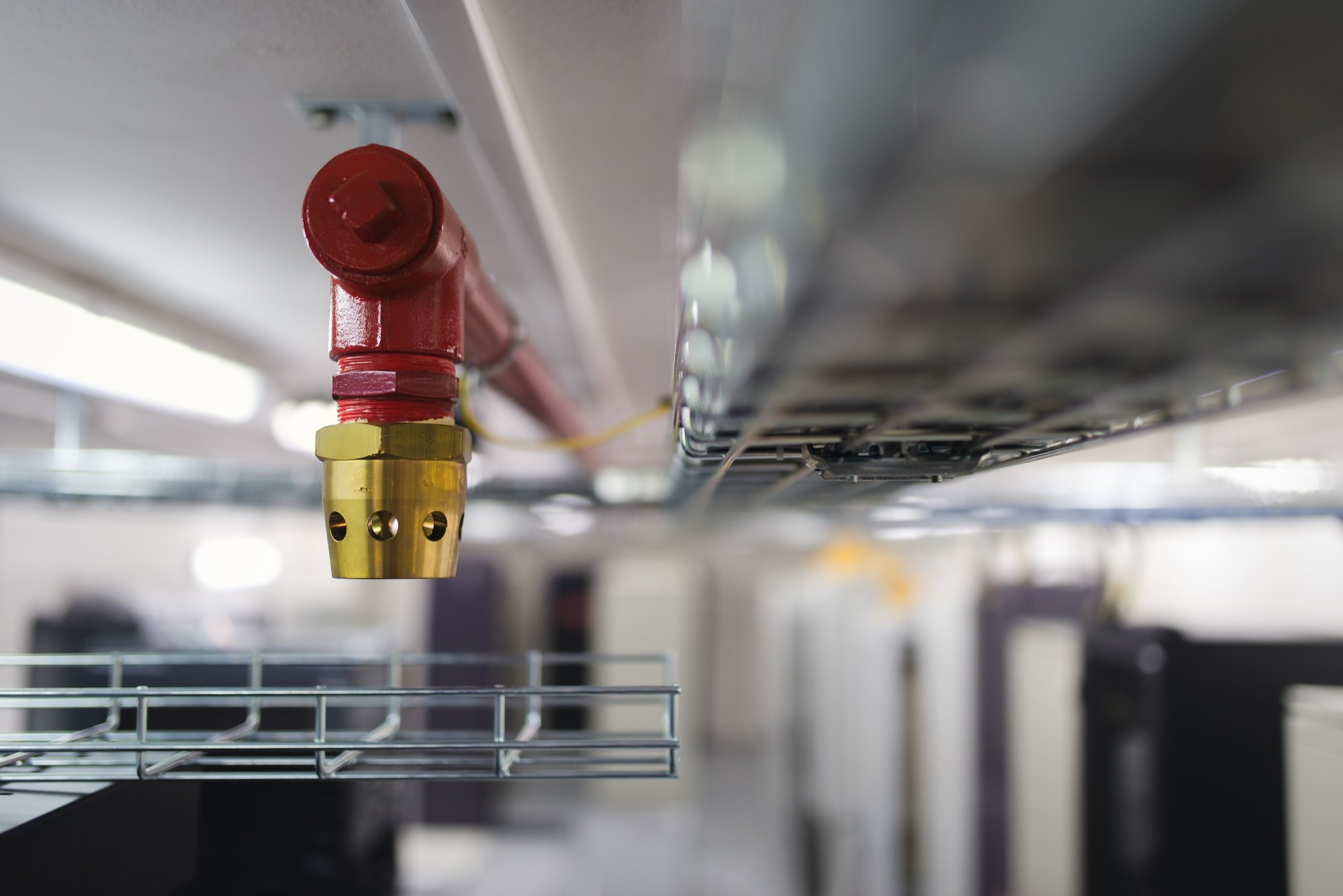Fire suppression equipment plays a crucial role in ensuring safety across diverse industries, particularly in environmental monitoring, gas analysis, and non-contact temperature measurements.
Detectors form a vital component of fire suppression systems as they facilitate early fire detection and initiate specific actions to mitigate potential hazards.
In this article, the factors to ponder when picking detectors for fire suppression equipment to ensure optimal fire safety will be examined.

Image Credit: JDzacosky/Shutterstock.com
Understanding Fire Suppression Equipment
Fire suppression equipment encompasses an array of solutions aimed at extinguishing fires. This includes fire sensors, detectors, and extinguishing systems. Fire sensors are categorized into four primary types: flame, heat, smoke, and thermopile. A brief overview is provided below:
Flame Detectors
Flame detectors identify the radiation emitted by flames and can be of the infrared, ultraviolet, or a combination of both types. Common usage is found in high-risk settings like industrial facilities and fuel-loading areas.
Heat Detectors
Designed to sense temperature increases, heat detectors are less susceptible to false alarms compared to smoke detectors. They prove particularly valuable in environments where smoldering fires are more probable, such as storage areas or boiler rooms.
Smoke Detectors
There are two primary types of smoke detectors: ionization and photoelectric detectors. Ionization detectors excel at spotting fast, raging fires, while photoelectric detectors are better suited for identifying smoldering fires. The combination of both types of dual-sensor alarms provides comprehensive fire detection capabilities.
What are Thermopile Detectors?
Thermopile detectors are passive radiation-sensing voltage-producing devices comprising multiple thermocouples arranged in a series. This configuration enables temperature measurement from a distance, relying on an object's infrared energy in a non-contact manner.
Due to their numerous advantages, thermopile detectors are increasingly favored for use in fire suppression equipment. These advantages include reduced signal noise due to non-contact operation, rapid response times, and reliable performance in extreme temperatures and harsh environments.
Factors to Consider when Choosing Detectors
A wide array of detectors is available for fire suppression equipment, and several factors should be considered before choosing a detector:
1. Environment and Application
Different environments, such as residential or commercial, may necessitate specific detector types. Hazard-prone or sensitive areas like laboratories or healthcare facilities may have unique fire detection prerequisites. In smaller spaces, thermopile detectors like Dexter's ST60 prove highly suitable.
2. Fire Detection Requirements
Response time and sensitivity levels are pivotal factors. The detectors' speed in fire detection and their sensitivity to different fire types should be considered for enhanced safety. For superior fire detection and high sensitivity, the 1M thermopile is a sound choice.
3. Compatibility with Fire Suppression Systems
Ensure that the detectors can seamlessly integrate with existing fire suppression equipment. Evaluate their compatibility with communication protocols to facilitate efficient information exchange. These aspects should be clarified with the manufacturer under consideration.
Dexter Research Center
Dexter Research Center is a leading provider of detectors and sensors for fire suppression and detection, gas analysis, and temperature measurement. The detectors are widely acclaimed for their sensitivity, precision, and durability, rendering them a trusted choice across various applications.
A range of silicon-based and thin-film thermopile detectors are manufactured for remote and non-contact operation at Dexter Research Center. These detectors offer precise temperature measurements without interfering with the subject, making them ideal for diverse industrial processes, medical procedures, and biomedical applications.
The models employed in fire suppression equipment encompass the 1M, 2M, and ST60 thermopiles, all featuring high sensitivity and favorable signal-to-noise ratios.

This information has been sourced, reviewed and adapted from materials provided by Dexter Research Center, Inc.
For more information on this source, please visit Dexter Research Center, Inc.